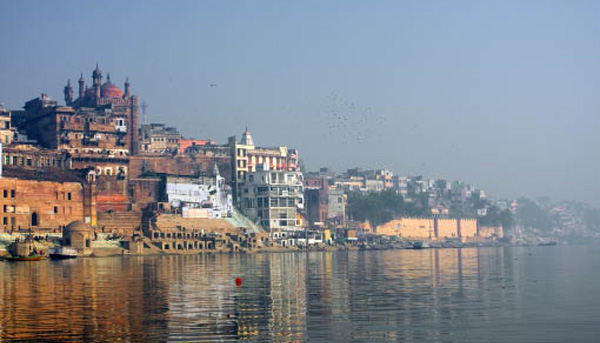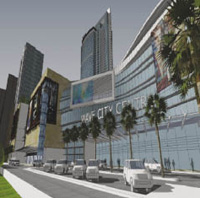India is trying to balance between the demands of growth and the urgent need to cut its energy and environmental costs. It’s time for the HVACR sector to pause and introspect.
India is trying to balance between the demands of growth and the urgent need to cut its energy and environmental costs. It’s time for the HVACR sector to pause and introspect. We bring you Part II of our report. Report by Pratibha Umashankar with inputs from B Surendar.

 There was a time, before India reclaimed the lost ground it had ceded to the West during the Industrial Revolution, when it seemed to have the sole bragging rights about its glorious past – its 5,000-year-old civilisation and its rich tapestry of cultures. About its future, it was strangely silent. Then came the paper-and-pencil revolution, and the collective Indian psyche, honed by centuries of abstract thinking, took its rightful place under the IT sun. Now, a country with its billion-strong population, most of it Gen-Next, rarely looks back. It carries the chip on its shoulder about being wired to write codes. And this has ushered in an economic boom signalled by rapid urbanisation, mushrooming of MNCs, energy shortage and rise of glass towers which need to be kept cool, even as they spew heat – in short, First World problems. But then, India is not a First World country equipped to deal with them. This asymmetry has created an HVACR Rubik’s Cube.
There was a time, before India reclaimed the lost ground it had ceded to the West during the Industrial Revolution, when it seemed to have the sole bragging rights about its glorious past – its 5,000-year-old civilisation and its rich tapestry of cultures. About its future, it was strangely silent. Then came the paper-and-pencil revolution, and the collective Indian psyche, honed by centuries of abstract thinking, took its rightful place under the IT sun. Now, a country with its billion-strong population, most of it Gen-Next, rarely looks back. It carries the chip on its shoulder about being wired to write codes. And this has ushered in an economic boom signalled by rapid urbanisation, mushrooming of MNCs, energy shortage and rise of glass towers which need to be kept cool, even as they spew heat – in short, First World problems. But then, India is not a First World country equipped to deal with them. This asymmetry has created an HVACR Rubik’s Cube.
The industry is now trying to make all the squares on its side green. ACRECONF 2013, a two-day international conference held on February 8 and 9, in New Delhi, organised by the Delhi Chapter of ISHRAE, in association with ASHRAE India Chapter, had the avowed theme “360 Degree View on Emerging Mega Trends in Building Design” and ACREX 2013, claiming to be the largest biennial International Exhibition and Conference catering to the air conditioning, refrigeration, ventilation and building services’ industries, held in Mumbai on March 7 and 8, once again organised by ISHRAE, tried to address this HVACR conundrum.
Sanjay Kirloskar, Kirloskar Brothers, as the Chief Guest speaking at ACRECONF, set the tone by enumerating a few of the key issues facing the sector:
Building green
Dr PC Jain, Chairman and Founder of Spectral Consultants, pointing out that India always knew how to build green, says: “India does not need to know how to make a building green; it’s part of our DNA. We have 1.3 billion square feet of green buildings in the country. But it’s not even 10% of what we are building, and so the target should be that whatever we build will be green. This was how it was 100 years ago.” A case of reverse engineering, perhaps? Or reinventing green?
He feels that sustainability need not be sacrificed at the altar of growth, as the key to progress is innovation. “The aspiration should be to reduce mechanical equipment and achieve through not only components, but also design,” he suggests.
Kirloskar reveals that India has the largest number of green buildings after the US. But, he raises a relevant issue which the industry has been skirting around, when he says: “Our HQ is LEED Platinum. But, once attained, it stays with us for life. It remains a LEED Platinum. But what about after that? Is the building green in the years that follow? In that context, it is important to ensure a proper O&M (operations and maintenance) regimen.” A stark reminder, indeed.
 Kirloskar believes that the onus is on the main players. “We share responsibility of bringing power consumption of high rises down to 20%,” he says.
Kirloskar believes that the onus is on the main players. “We share responsibility of bringing power consumption of high rises down to 20%,” he says.
Vivek Khurana, Director (Operations), Nutech, speaking to Climate Control Middle East on the sidelines of ACREX, thinks that the HVACR sector in India is trying to keep pace with global green trends, just to remain competitive. “The systems are changing for the better in India because of some foreign consultants. We have norms in India that are followed. Technology is all there.” he reveals.
He describes a project his company is involved in to highlight how the HVACR scenario and the mindset are changing in India: “In a hospital project for Reliance in Mumbai, we have supplied AHUs. They have implemented a fan wall technology (multiple fans and three-stage filtration process) and DOAS units in the hospital. The design is very European- or US-influenced.”
He goes into specific details of the technology: “The AHU is split into nine to 10 zones, each with cooling coil for nine to 10 operating unit theatres. So, one common set supplying individually to different operation theatres. And if even one conks off, others can ramp up to compensate. So, there is redundancy that has been factored in. And we have local suppliers.”
But he adds: “That said, very few companies are willing to pay for this kind of an approach. It is expensive but energy-efficient technology.”
“India is a price-oriented market,” agrees Murtaza Arsiwala of UAE-based Rubber World Industries. His company, which has made inroads into India, had a presence at ACREX.
Coming clean
Due to rising costs of conventional sources of energy and rapidly depleting fossil fuel reserves, along with the new global mantra of clean energy, India, too, has joined the chorus and trying to encourage clean technology.
Fortunately, the country has abundant unexploited renewable energy resources, such as solar, wind, biomass and water. Among these, a relatively untapped source is ground heat. In this regard, the India Chapter of International Ground Source Heat Pump Association (IGSPHA) has its job cut out. Discussion about this in one of the sessions at ACRECONF prompted a delegate to comment: “Ground source heat is available free of charge; we don’t use it, because we don’t know how to do it. One thousand five hundred buildings are registered with the Council in India, and once we do learn more about ground heat source, we can progress.” The delegate went on to throw a challenge: “Sanjay Kirloskar is present here. I would ask him and the Kirloskar Brothers to pay attention to pumping all the valuable heat from the ground, so they can get the energy from the ground.”
“As leaders, we should ensure that the country runs on clean energy,” Kirloskar concedes, not in response to the challenge, but as an avowed goal.
Ravi Chandran of Danfoss, speaking of how Denmark is dealing with the issue of energy efficiency, highlights that coal consumption in the country is coming down. “Ninety per cent of the energy production in Denmark is non-conventional,” he says.
Can India emulate Denmark’s strategies? This is more than a mere academic riddle. While the analogy between Denmark and India seems skewed – Denmark’s population is five million, while India’s is a billion plus and counting – the lessons in clean and green technology need not be dismissed as untenable.
That said, admittedly, Indian energy-efficiency market has evolved rapidly over the last few years, thanks to government initiatives and investment from large players, including foreign investments, which have particularly put pressure on the HVACR sector to get its act together. Hence, energy efficiency at plant and building level, smart grid technologies, green building products and services and clean coal technologies are the growing trends, not just as prerequisites, but also as new avenues for investment.
Also, it’s not enough to build green and clean, but let old buildings catch up with new technologies now available. The time is ripe for retrofitting. Kirloskar echoes this view when he says, “Refurbishment and replacement offer opportunities to designers to come up with energy-efficient designs.” He adds that the IGBC (Indian Green Building Council) and the CII (Confederation of Indian Industry) are playing a vital role in energy efficiency.
It is evident that India does not lack energy-efficient designs, products or technology. It’s once again the perennial and all-pervading problem of running a loose ship – absence of will to tighten and/or enforce regulations and lack of standardisation. Other issues India needs to address are accountability and measurability – in short, energy audit. As Dr Jain points out, “We are very good at design and build, but poor at documentation. USGBC (US Green Building Council) forces us to audit and certify.”
BN Khurana, Managing Director, Nutech, agrees and calls India a “non-standard, customised market”.
Chandran reveals that his company, Danfoss, has set up a psychrometric lab in Chennai, India, for all manufacturers. The first of its kind in India, the lab tests refrigeration and air conditioning equipment.
Kirloskar believes that the situation is improving with major manufacturers in India offering energy audit services. “So I am optimistic,” is his verdict.
All quiet on the economic front?
“Below average” are two words with which BN Khurana sums up India’s general economic outlook. But he qualifies this: “We are operating at 80% of our normal sales. The trend so far for the past two to three years – and I feel it will last for a year more – is that things will be slow on the real estate front. Some projects that were held back have started again. Overall, still suppressed.”
His overall report card is: “Drivers for growth – the United States is picking up. Europe is bad. India can survive on its own, because its inner consumption is good. The population will help. India is not in trouble. It will sail through.”
Speaking of the HVACR sector, he says that he would like to see innovations to bring down power consumption. “At the same time, cost has to be reasonable. It’s a very competitive market,” he adds.
On the other hand, Vikash Sekhani, Director, SAFE A&T Technology, India, speaking to Climate Control Middle East during ACREX in Mumbai, expresses optimism: “The market is showing positive signs. The market size is growing. Last year was flat. This year, the figures coming in indicate an uptrend.”
He, however, admits that the market price of houses is stagnant – there’s no depression yet. There’s no drop in prices. But he is enthusiastic about booming satellite towns: “You have to see the size of the construction in Noida Expressway. It’s mindboggling. And in Thane and beyond Thane [in Maharashtra], there are entire cities coming up, not just buildings.”
This spells good news for the HVACR sector. In Sekhani’s reading of the market: “Urbanisation is happening; land is shrinking. The biggest growth spurt is in VRFs, splits, RACs/WACs (room air conditioners/window air conditioners). The sales are going up. In many glass buildings, they have made provisions for RACs and splits, not central air conditioning. So in India, it’s a totally different story. People are still going for windows. Indeed, there’s no growth spurt yet on the commercial AC side. To tell the truth, the commercial AC market is a very, very flat market.”
Arsiwala, speaking about his company, Rubber World Industries (RWI), has a different take: “There’s no competition in the market for us. We are more of a service-oriented company. We are looking for dealers here (in India) who are service-oriented. We supply to Carrier, Blue Star and Voltas. And now in addition to supplying, we are going to focus on the retail markets.”
His company’s target is 500 to 600 containers a year. “After we achieve our target, we will look at the feasibility of setting up marketing in India,” he says.
It is interesting that Rubber World, manufacturers of closed-cell elastomeric rubber insulation products, in a press release to coincide with its participation in ACREX revealed: “The construction industry is in a booming stage in most regions of South Asia, especially in India. In India, the cities, like Mumbai, New Delhi and Bangalore, have a high capability for all kinds of products related with construction field. The quality-oriented market is giving more emphasis on good quality/long-lasting products as all the developments are eyed on a long-term strategy. So, RWI is also putting its efforts for supplying good quality/long durable products so as to satisfy the customer needs to a great extent.”
Even more interestingly, and reflecting the above sentiments, quite a few Middle East-based companies such as Zamil from Saudi Arabia and Bin Dasmal (Trosten) had a presence at ACREX. They were obviously looking at India for business opportunities in a fast-evolving energy-efficient scenario. Ergo, India continues to offer business opportunities, despite a moderate growth rate in the last couple of years.
Conclusion
India is seen as a growing market due to rapid urbanisation and changing lifestyle, both of which are positive signs for the construction industry, in general and the HVACR sector, in particular. What the country needs to address is the issue of meeting both energy demands and demands of sustainability, in order to attract foreign players. As if to stand this market wisdom on its head, increased investments by global corporations has forced the country – and the sector – to pull itself up by its bootstraps and usher in innovation, self- and governmental regulations, embrace green technologies and assume responsibility towards reducing climate change risks. This symbiotic relationship – perhaps born of necessity – is a sign of good health for the country and the HVACR market, and, in the long run, for the environment.
Note: The report is based on interviews conducted at ACRECONF 2013 held in February in New Delhi and ACREX 2013 held in March in Mumbai.
District cooling in India is yet to gain ground in the manner in which it did in the GCC, particularly in the UAE in the early part of the last decade. That is not to suggest that projects are not coming up. Those that are coming up are conservative in nature and, for a large part, are in the range of 30,000 TR – 50,000 TR.
 The district cooling plant for Wave City Centre in Noida, New Delhi, is a case-in point, says Kandasamy Anbalagan, the Managing Partner of Proleed Engineering Consultants, Dubai, which is handing the project for the client, Wave Infratech.
The district cooling plant for Wave City Centre in Noida, New Delhi, is a case-in point, says Kandasamy Anbalagan, the Managing Partner of Proleed Engineering Consultants, Dubai, which is handing the project for the client, Wave Infratech.
Here are the project highlights:
The project report admits that initial fears were the unpredictable and slow nature of the Indian construction projects – the plant sizes and phases have to be carefully evaluated for achieving optimum efficiencies and the availability of skilled manpower for installation and maintenance. However, with the presence of senior and mid-level executives who brought to the table their experience of and exposure to the Middle East construction sector and large DCPs, the stakeholders were willing to look into the possibilities with proper financial models for achieving their project goals – sustainability and associated additional FARs, life cycle cost benefits, etc., all of which led to the consideration of DCPs in the long term, says the client.
The article, “Balancing Act: Property developers learn new tricks to tide over a crisis of funds” in the March 17, 2013 issue of Business Today, gives an insight into the construction scenario in India: “With both financiers and customers in short supply, thanks to the two successive downturns of the last few years, the industry has been forced to adjust – and fast. Even the mightiest have faced up to reality: in August last year, for instance, DLF, India’s largest realtor, sold 17.5 acres of prime land it owned in the heart of Mumbai, the country’s costliest real estate market, to trim its debt.”
The article goes on to reveal that the real estate boom had begun to show signs of slackening even before the first downturn struck in September 2008 with the collapse Lehmann Brothers.
If the article is to be believed, fewer residential projects are being launched now. Even the FDI into Indian real estate when the sector was first opened, has reportedly dwindled to a trickle.
Paradoxically, Mumbai suffers from its perennial problem of housing shortage. Another article titled “Rising from the rubble: Redevelopment projects are luring big builders in land-starved Mumbai”, in the same issue of Business Today, gives the following statistics:
How does one compute the information thrown up by the two articles? To plan ahead, The HVACR sector needs to tease out the truth hidden in the paradox. As in most things in India, the opposite is also true.
Copyright © 2006-2025 - CPI Industry. All rights reserved.